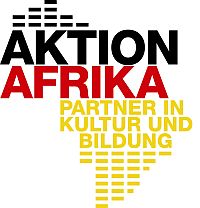Are you in Germany for the first time?
The first time I was in Germany was in 1993. At that time I was member of the Free Flight Dance Company, which is based in Johannesburg. We were invited by the Tanzprojekte Köln. I met James Saunders, one of the most influential American dancers and choreographers. He founded the Tanzprojekte Köln. At that time he was principal dancer at the Cologne Ballet. He impressed me very much. 1993 was actually the first time that I left Africa. After that, I have travelled a lot.
Where to?
I studied ballet and dance in England in 1996 and 1997. Later I for example worked in Egypt and Hungary. I am especially grateful to have been working with some of the leading dance companies in South Africa, such as the Free Flight Company in Johannesburg, the Playhouse Dance Company in Durban and the South African Ballet Theatre (SABT). Working there I could give my country something back for supporting my career! It is very rewarding to be part of the social transformation from apartheid into democracy and to scrutinize this process by the means of dance.
The current stay in Germany helps me to further focus on my work and develop new projects. I also participated in the International Summer Lab at the Künstlerhaus Mousonturm in Frankfurt. In Cologne I met Kajo Nelles again, with whom I worked in Cologne in 1993. The workshop itself was very inspiring, exploring different traditions and attitudes, new styles and techniques. Dancing is far more than moving. Dancing can be form of philosophy!
In the school I grew up with violence that was so much part of the society we lived in. I was once stabbed by a classmate, beaten up also by members of the Zulu Inkatha party and further experienced, how burning tires were used as arms, the so called "necklacing" and was thrown to jail. I was lucky to survive. Since then I try to find out what is defining us a human beings and why we are constantly expose others and us to pain and violence.
Tyres are also the subject of the dance theater Tempered Souls, which you have choreographed and danced in Soweto. What is it about?
This dance piece explores the meanings that are associated with the image of the tire. Tires are first of all a means of transportation, traffic, acceleration. The more the traffic spreads land surfaces disappear and larger areas become under central control. Tires are a metaphor for subjugation, control, expropriation, and also for violence. Back in the 19th century Africans were forced to work in rubber plantations in the Belgium colony of the Congo. If someone resisted his hands were cut off. The legacy of slavery is in the tires. But in our modern global economy they are also an epitomy for the value-added-chain of capitalism because of there different possibilities to use them!
What are you working now?
Right now I am creating a dancing school in Johannesburg : the jozi dance:space in Arts on Main. I would like to engage young South Africans to the fascination of dancing notwithstanding where they come from.
What are you dreaming of?
Being in Germany I feel very strongly how little dance, how little art is recognized and promoted in South Africa. Sometimes I feel discouraged because of that. But there is only one way: We artists have to promote our work ourselves.
I wish there would be more cooperation between South African and European dancers – not only in musicals but also in the field of classical dancing. It might be crucial that the Europeans perceive African art as diverse as their own. The Africans are as different as are the Europeans. It is worth to explore this diversity.
(Angela Grosse)

Itumeleng Mokgope's residency in 2010 at the german Stiftung kunst:raum sylt quelle in 2010 has been kindly supported by the Aktion Afrika of the Auswärtiges Amt.


